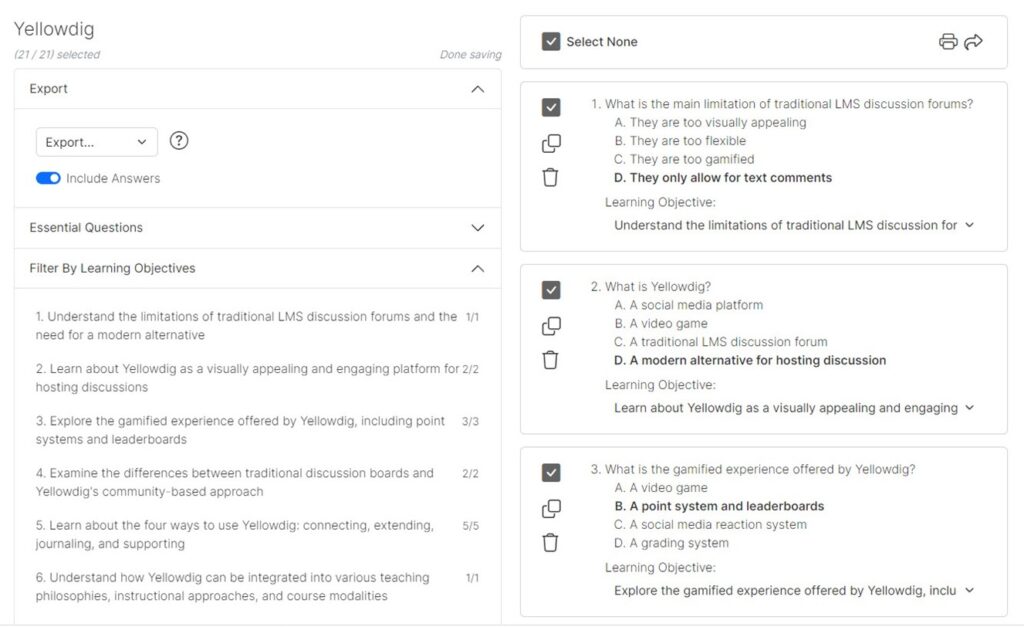While education circles have focused on ChatGPT, many other AI systems have emerged that offer instructors and students tools to help create teaching material and projects. We will examine these overlooked systems here. But first, let’s take a look at why AI has suddenly exploded across the digital landscape.
The thinking machine
AI is not a new development; it actually goes back nearly as far as computers themselves, to the 60s. The advent of the computer soon drew interest in creating a general-purpose thinking machine, but these efforts floundered for an interesting reason (Palfreman, 1992). A computer trained to stack blocks with a robotic arm started from the top and moved downward, dropping the blocks into a pile because it did not know about gravity.
The problem was that ordinary intelligence requires a lot of background information that we are not aware of. Thus, researchers next worked on how to add all this background information to the computer’s memory. The Cyc project tried to load an encyclopedia of information into an AI computer. While this would seem like an easy task, it turned out that the real problem was not the amount of information that a computer has but rather the type of information. Human thought does not require an encyclopedia of information; after all, we all think but don’t have an encyclopedia memorized. What it requires is the kind of commonsense information not found in encyclopedias, such as that if George Washington is in Virginia, so is his nose. The Cyc project has since turned its attention from general-purpose intelligence to narrowly focused expert systems that can help people perform specific tasks, such as analyzing a terrorist database.
With this realization, efforts turned toward building a whole new system modeled on the human brain. The brain learns from its environment, and thus designing a system that will essentially program itself by learning from interactions with its environment became the goal. This is the central insight that led to AI as we know it today. Instead of drawing on a glut of preloaded information, an AI system perfects its neural network by learning from users.
While critics like to point out the ways that AI can go wrong with cleverly worded questions, the real story is its remarkable ability to get it right with ordinary questions. Of course, these systems make mistakes, but they also learn from those mistakes, meaning that the systems are always improving. Unlike a traditional computer system that requires teams of programmers to fix its problems, today’s systems essentially fix themselves, which is why things are moving so quickly.
With this in mind, let’s now turn to some AI alternatives to ChatGPT.
Google Bard
Microsoft invested $11 billion in OpenAI, the company that owns ChatGPT, and as a result Chat GPT is a menu option in Microsoft’s Bing search engine. Not wanting to be left behind, Google quickly jumped into the AI game with Google Bard. Bard has the benefit that it offers additional draft responses to queries to compare with the primary response, which ChatGPT does not. Beyond that, the functionality is identical, so the only differences are in the outcomes. Tech.co tested the systems on a variety of questions and found the following results that can guide instructors and students in choosing one or the other. I quote:
- Bard’s responses were more conversational, while ChatGPT’s were more informational
- ChatGPT stuck to the brief, while Bard was more likely to relay relevant additional information
- Bard gave us up-to-date information, whereas ChatGPT struggled in this regard on one question
- ChatGPT generated cleverer answers for tasks like poem writing and content ideation
- Bard’s responses were often set out in a more readable format than ChatGPT’s responses
- ChatGPT was better at paraphrasing and summarizing, but Bard was better at simplification
QuestionWell
QuestionWell is a free system that generates questions from an article or text that you give it. You merely provide the URL or copy the full text into a field for it to analyze. After a minute or two, it will come up with around 20 multiple choice questions based on the text. Each question comes with a variety of answer choices, with the correct one highlighted. It even provides essential questions for the article as a whole and creates learning objectives that correspond to groups of questions. Thus, you can pick which questions you want to use or choose your desired learning objectives and let it filter the questions by those objectives. Either way, once you have chosen the questions you want, you pick a format for exporting them. Options include not only general file formats, such as Word docs, but also formats that integrate into common quizzing systems like Kahoot! and learning management systems such as Canvas and Moodle, enabling users to upload the results to those systems. I found it to be remarkably accurate with a test article from The Teaching Professor (Figure 1).

Go to this tutorial to learn how QuestionWell works.
InVideo
InVideo will create a video from a script or even a mere two-sentence prompt that you give it. You then pick a template from a gallery of around 50 options, and from there it parses the script into pieces, finds the best images and video clips to match it, adds text, and stitches the result together into a video. You can swap out any of the elements later on with images, video, or audio from InVideo’s own library or that you upload. In particular, you will want to delete the text as there is no reason to put the script text into the video itself. If you don’t upload narration, the system will create a music track for the video, which you can swap out for clips from a library or that you upload. I found that the result is a decent start but most definitely needs editing. The system may get better over time, but the image and video libraries are fairly comprehensive, and using InVideo is quicker than making a video from scratch with a video editor. An alternative is Lumen5, which has less functionality and fewer media assets but is simpler to use.
gotFeedback
Feedback is one of the most important influences on learning and student performance, but all research indicates that students are not getting enough of it from their instructors. gotFeedback can help. It allows instructors to upload or paste the text of a student assignment into the system, which will generate feedback on any or all of four categories that the instructor picks: structure, details, claims, and evidence.
I found that it provides good feedback on general elements, such as coherence and writing style, that do not require a deep understanding of the topic. In particular, it does a nice job of giving advice on how to improve the work. It also offers a lot of good ideas that instructors might not think of. But instructors still need to supplement the results with their subject matter expertise, and so they should avoid using it to simply outsource the job of providing students with feedback.
The world of AI is progressing at a dizzying, some say alarming, pace, and I don’t doubt that nearly all digital tools will have some AI function built into them in the near future. AI does much of the basic legwork of creating digital content, freeing up instructors and students to focus on higher-level thinking.
Reference
Palfreman, J. (Writer, Producer, Director). (1992). The thinking machine (Episode 4) [TV miniseries episode]. In J. Palfreman (Executive Producer), The machine that changed the world. PBS. (Watch on YouTube)






